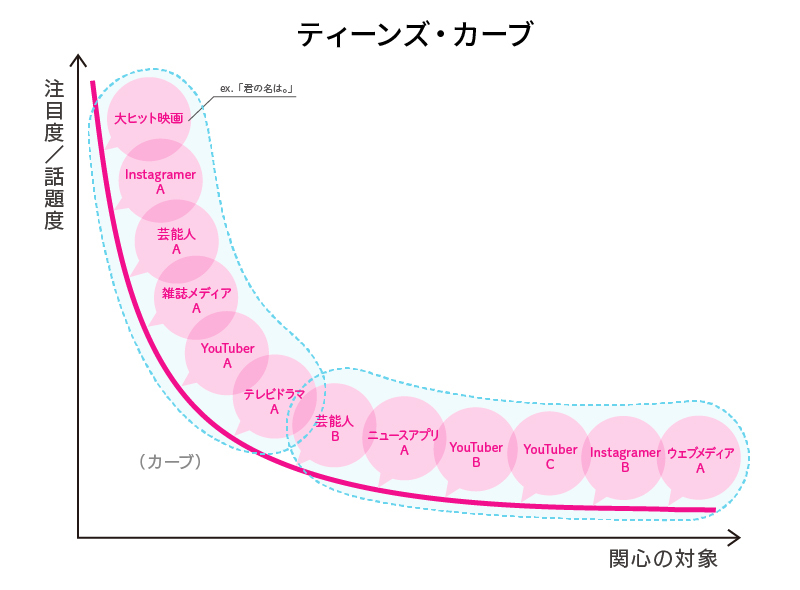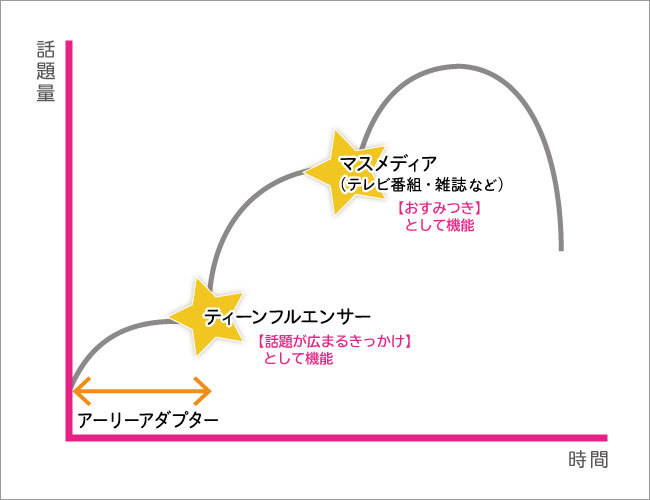Our nine-month serialized feature "Teen Influencer Dissection" also reaches its conclusion with this installment. As a summary, we'll revisit the columns so far and reaffirm the contemporary significance of focusing on teen influencers.
The three perspectives highlighted in the title are: ① "Mindset and Ways of Thinking," ② "Communication and Connections," and ③ "The Structure of Information Flow." We will organize our nine-month exploration along these lines: ① What values do today's teenfluencers hold? ② How do they communicate with others and create interactions and connections? ③ Finally, how do trends and fads ride the wave of social media based on this?
Covering the high school girl beauty pageant revealed that what contestants needed to win was mastery of advanced communication techniques.
We'll examine the details shortly, but to preview our conclusion: "It's not just the spread of information that matters, but its depth, and teen influencers are at the center of these communities." Crucially for us, "monitoring this space yields not only marketing insights but also business hints that anticipate societal shifts." Let's explore this concretely, building on our previous series.
Three Perspectives for Understanding Teen Influencers
The three perspectives and their corresponding articles are as follows:
Perspective ①: Mindset and Thinking
Series Part 2: "We Investigated the Reality of 'Japan's Cutest High School Girl?!' How Teen Influencers Build ★ Support Ratings"
Series Part 4: "What Kind of Kids Move the Hearts of Teens? The 4 Types of Teen Influencers"
Perspective 2: Communication and Connections
Series Part 3: "Teen Influencers' Smartphone Culture"
Series Part 5: "The 'Connection' Reality of Today's High Schoolers Seen on SNS ~ Why We Don't See Young People 'Hanging Out' Anymore"
Perspective 3: The Structure of Information Flow
Series Part 1: "Smartphones × Diversifying Interests = The 'Teen Curve'"
Part 6: Teens Obsessed with "Process-genic" – A Deep Dive into Trends Among Teens Living in the SNS Era
Regarding Perspective ①, the keywords emerging from our research were "flat" and "heroine." To gain support from peers in high school beauty pageants, contestants must maintain uniformly flat relationships with others and never slack off in their SNS communication. Interactive exchanges with supporters are essential for teens to build influence.
One teen influencer mentioned regularly using live streaming services like LINE LIVE to interact with their supporters. This is how they acquire the heroine-like qualities crucial for gaining support.
Regarding Perspective ②, notable elements include "favorite marks on SNS," "differentiating SNS usage," and "belonging to multiple communities via sub-accounts*." For example, one teen influencer uses a designated "favorite mark" (in this case, a leaf emoji) on Twitter, displayed in their account name. Supporters mimic this by adding it to their own account names or profiles. This functions as a shared symbol (sign), creating a pseudo-community among fans.
Furthermore, by strategically using different SNS platforms ( see Part 5 of this series for details ) and tailoring their content to each platform's characteristics, they establish an appropriate online identity.
As a general trend among teens, they often utilize secondary accounts to fully commit to their favorite subjects. Therefore, it's crucial to understand that both content creators and consumers are using social media with a high level of literacy, effectively distinguishing between platforms.
*Refers to specific secondary accounts used for particular purposes among multiple SNS accounts, distinct from the main account.
"Communities for Deepening Unique Information" are the core of teens' information behavior

(Reprinted from Part 1 of the series)
Regarding the final perspective ③—how information spreads and trends emerge originating from teen influencers—we have highlighted keywords like "Teen Curve" and "Importance of Participation = Processgenic."
The "Teen Curve" concept illustrates the diversification of teen interests, while "Processgenic" describes the structure where the sense of participation in the information dissemination process acts as a booster for its spread.
Paul Lazarsfeld, a social psychologist who led 20th-century media research, proposed a two-step flow hypothesis for (mass) communication. This posits that even mass media like television and newspapers do not reach audiences directly; instead, opinion leaders first interpret the information and then re-disseminate it, enabling it to reach a broader audience.
This theory feels more convincing to us living in the internet age. Furthermore, it's crucial to note that in modern times, there are also flows originating from teen influencers, and that the flow is no longer two-step but N-step. The Teen Curve and Process Genics were concepts designed to capture this complexity in information circulation.
Media possesses the function of spreading information, while teen influencers provide the catalyst for deepening it. Each teen influencer maintains their own information community, and through the process of information spreading within that community, deep understanding and conviction are cultivated in each individual teen of the same generation.
<Discovery Step Concept Diagram>

(Reprinted from Part 6 of the series)
Furthermore, it is not uncommon for information to be recognized as a trend originating from teen influencers as early adopters, subsequently spreading through various media channels. This process generates diversity in information.
Given these structures, viewing media and teen influencers as a binary opposition risks missing the essence. Rather than a superficial "versus" dynamic like media vs. individuals or broadcast vs. internet, we must grasp the dynamism where both mutually influence and complement each other, thereby establishing a more diverse set of information choices.
Focusing on beauty pageants reveals new communication technologies
As often noted, elections represent the most developed and challenging arena for communication technology. The U.S. presidential election serves as a symbolic case, acting as a cutting-edge showcase for communication technology and its applications.
And we can say this shared dynamic was also present to some extent in the context of this high school beauty pageant. The teen influencers competing in this "election" were practicing the most effective and contemporary communication methods, sometimes consciously, sometimes unconsciously.
We intend to continue researching teens (teen influencers). Because within their practices, we see the shape of leapfrogging* – capturing the cutting edge of the information society. As touched upon in this series, we can observe the most easily understandable forms of adaptation to the advanced values embodied by today's online society: the structure of information diffusion, the preference for real-time, the disposition to support influencers...
※A sudden leap forward or change. Here, it refers to young people rapidly mastering technology and adapting to new values and cultures, rather than learning from information-literate adults.
Furthermore, I believe it's crucial to view teens not merely as targets for segmentation, but as a key to deciphering societal shifts. That is, it's vital to see them as an opportunity to uncover insights that can lead not only to advancements in advertising and promotion, but also to the creation of new businesses and markets.
Dentsu Inc. Gal Lab will continue advancing research and sharing insights in this field, so we hope you'll stay tuned!






